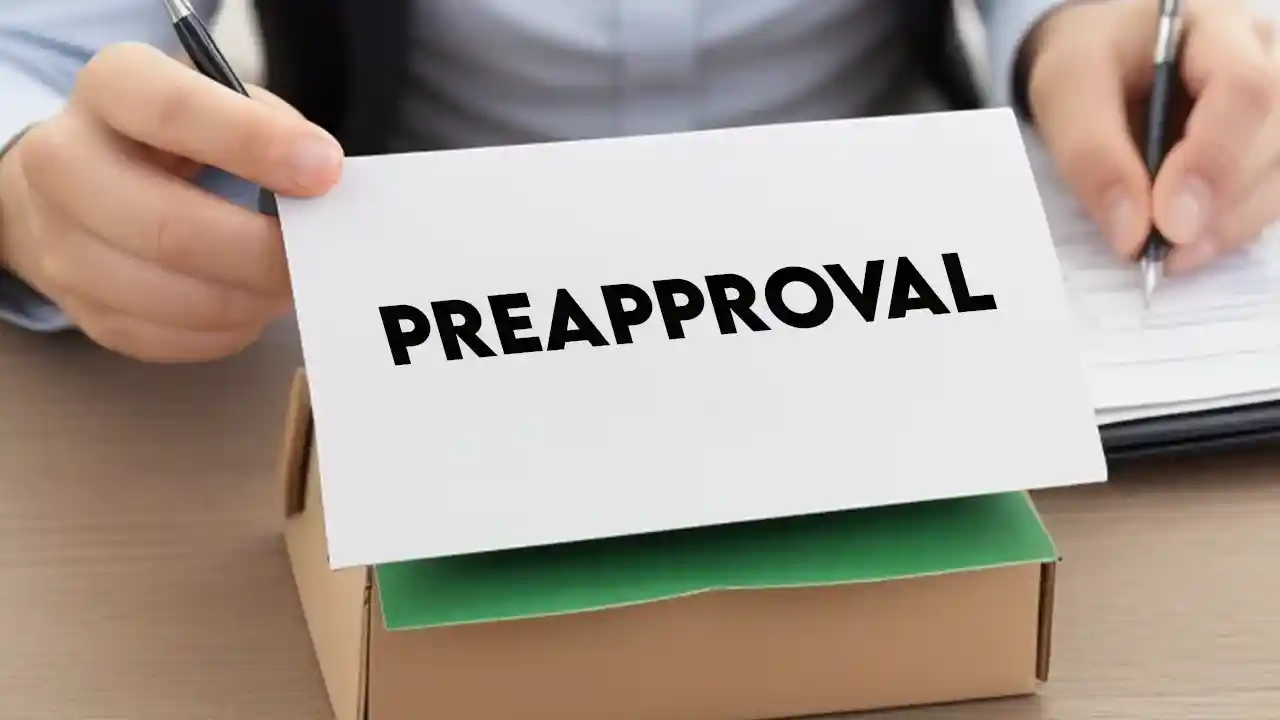Mortgagerateslocal.com – If you are planning to buy a home, you may have heard that getting preapproved for a mortgage is a smart move. A mortgage preapproval is a letter from a lender that shows how much you can borrow, what interest rate you qualify for, and what loan terms you can expect.
Mortgage Preapproval can be affected by any changes in your financial situation and credit history. Therefore, it is important to maintain your financial stability and creditworthiness during the preapproval period and avoid making any major financial moves that could jeopardize your preapproval.
A mortgage can give you an edge over other buyers who may not have this proof of financing, and it can help you narrow down your home search to fit your budget. But how long is a mortgage preapproval good for? And what can you do to keep it valid until you find your dream home?
We will answer these questions and provide some tips on how to prepare for a mortgage preapproval and how to compare different offers from lenders. Let’s Begin!
What Is a Mortgage Preapproval?
A mortgage preapproval is not a guarantee that you will get a loan, but it is a conditional commitment from a lender that they are willing to lend you a certain amount of money, based on your financial situation and credit history. A mortgage preapproval can show sellers that you are a serious and qualified buyer, and it can speed up the closing process once you make an offer.
To get preapproved, you need to fill out a mortgage application and provide some documents to the lender, such as:
- Proof of income, such as pay stubs, W-2 forms, and tax returns
- Proof of assets, such as bank statements, investment accounts, and retirement funds
- Proof of identity, such as a driver’s license or passport
- Proof of credit, such as a credit report and credit score
The lender will review your information and perform a hard credit check, which may affect your credit score slightly. The lender will then issue you a preapproval letter, which will state the loan amount, interest rate, loan term, and other details of the loan you are preapproved for. The preapproval letter may also list some conditions that you need to meet before the final approval, such as providing additional documents, getting a home appraisal, or maintaining your credit score.
How Long Is a Mortgage Preapproval Good For?
A mortgage preapproval typically lasts for 60 to 90 days, depending on the lender and the expiration date stated on the letter. However, this does not mean that your preapproval is locked in for that period.
Your preapproval is based on your financial situation and credit history at the time of application, and any changes in these factors can affect your preapproval status. Some of the changes that can invalidate your preapproval are:
- A significant drop in your income or a change in your employment status
- A large increase in your debt or a missed or late payment on your credit accounts
- A major purchase that affects your debt-to-income ratio or your available cash
- A change in your credit score or credit report due to errors, fraud, or identity theft
- A change in the loan program, interest rate, or loan terms that you applied for
If any of these changes occur, you need to inform your lender as soon as possible and provide updated documentation. The lender may then revise your preapproval letter or deny your preapproval altogether. Therefore, it is important to maintain your financial stability and creditworthiness during the preapproval period and avoid making any major financial moves that could jeopardize your preapproval.
How to Renew Your Mortgage Preapproval
If your preapproval expires before you find a home or make an offer, you may need to renew your preapproval with the same or a different lender. To renew your preapproval, you need to follow the same steps as getting preapproved for the first time, which are:
- Contact the lender and request a renewal of your preapproval letter
- Fill out a new mortgage application and provide your Social Security number
- Provide updated documentation of your income, assets, identity, and credit
- Wait for the lender to review your information and perform a hard credit check
- Receive a new preapproval letter with the updated loan amount, interest rate, loan term, and expiration date
Renewing your preapproval may take less time than getting preapproved initially, since the lender already has your basic information and may not require as much documentation. However, you should still plan ahead and renew your preapproval before it expires, so that you don’t have a gap in your financing proof. You should also be aware that renewing your preapproval may result in a different loan offer, depending on the current market conditions, interest rates, and your financial situation.
How to Compare Mortgage Preapproval Offers
If you want to shop around and compare different mortgage preapproval offers from different lenders, you need to pay attention to several factors, such as:
- The loan amount: This is the maximum amount of money that the lender is willing to lend you, based on your income, assets, and credit. The loan amount may vary depending on the loan program, the down payment, and the property value. You should compare the loan amount with the price range of the homes you are interested in and make sure that you can afford the monthly payments and the closing costs.
- The interest rate: This is the percentage of the loan amount that the lender charges you for borrowing the money. The interest rate may be fixed or adjustable, depending on the loan type. The interest rate affects the amount of interest you pay over the life of the loan and the size of your monthly payments. You should compare the interest rate with the current market rates and look for the lowest rate possible for your loan type and credit score.
- The loan term: This is the length of time that you have to repay the loan, usually expressed in years. The loan term may range from 10 to 30 years, depending on the loan type and your preference. The loan term affects the amount of interest you pay over the life of the loan and the size of your monthly payments. You should compare the loan term with your financial goals and choose the term that suits your budget and repayment plan.
- The fees and points: These are the additional costs that the lender charges you for processing and closing the loan. The fees may include origination fees, appraisal fees, title fees, credit report fees, and other charges. The points are optional fees that you can pay upfront to lower your interest rate. One point equals 1% of the loan amount. You should compare the fees and points with the loan amount and the interest rate and look for the lowest fees and points possible for your loan type and credit score.
To compare mortgage preapproval offers, you should ask each lender for a loan estimate, which is a standardized document that shows the loan amount, interest rate, loan term, fees, points, and other details of the loan offer. You should review the loan estimate carefully and compare it with other loan estimates from different lenders. You should also ask the lender any questions that you have about the loan offer and the preapproval process.
How to Prepare for a Mortgage Preapproval Application
Before you apply for a mortgage preapproval, you should do some preparation to make the process smoother and faster. Here are some tips on how to prepare for a mortgage preapproval application:
- Check your credit report and score: You should check your credit report and score at least three months before you apply for a mortgage preapproval, so that you have enough time to correct any errors, dispute any negative items, and improve your credit score if needed. You can get a free copy of your credit report from each of the three major credit bureaus (Equifax, Experian, and TransUnion) once a year through AnnualCreditReport.com . You can also get a free credit score from various sources, such as your bank, credit card issuer, or online service. You should aim for a credit score of at least 620 for a conventional loan and 580 for an FHA loan, although higher scores may qualify you for better rates and terms.
- Gather your documentation: You should gather all the documentation that the lender may require for a mortgage preapproval, such as proof of income, proof of assets, proof of identity, and proof of credit. You should have copies of your pay stubs, W-2 forms, tax returns, bank statements, investment accounts, retirement funds, driver’s license, passport, and credit report. You should also have a list of your current debts, such as credit cards, student loans, car loans, and personal loans, and their balances, interest rates, and monthly payments.
- Determine your budget and goals: You should determine how much you can afford to spend on a home, based on your income, expenses, savings, and debt. You should also consider how much you can save for a down payment, which is the amount of money that you pay upfront for the home. The minimum down payment may vary depending on the loan type, but it usually ranges from 3% to 20% of the home price. You should also consider how long you plan to stay in the home, what type of home you want, and what features you need. You should have a clear idea of your budget and goals before you apply for a mortgage preapproval, so that you can choose the right loan type, amount, term, and rate for your needs.
Conclusion
Getting preapproved for a mortgage is a smart move that can help you find and buy your dream home. A mortgage preapproval shows how much you can borrow, what interest rate you qualify for, and what loan terms you can expect. It can also give you an edge over other buyers who may not have this proof of financing, and it can speed up the closing process once you make an offer.




